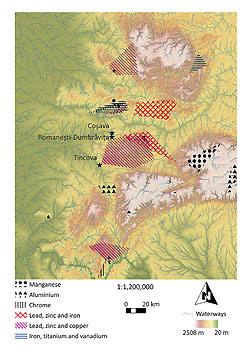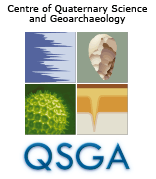Far too often does country- or language-specific nomenclature impede the estimation of the past lithic raw material economy. Sadly, the early Upper Palaeolithic raw material record of the open-air localities of the Banat in Southwest Romania is no exception. It is dominated by a rock in literature referred to as Silexul de tip bănăţean. Silexul means “[...] a wide range of hard rocks with sharp edges, from which Palaeolithic tools are forged” (F. Mogoşanu/M. Cârciumaru, Paleoliticul din Banat. Institutul de Arheologie-Bucureşti Biblioteca de Arheologie XXXII; Bucureşti 1978, p. 18) and cannot simply be translated to flint. Moreover, the identity of the other varieties is also far from straightforward.
It is hence proposed to consider only the geochemical make-up of the lithic records by means of X-ray fluorescence spectroscopy. Five distinct chemical groups were discerned and used as guides to delineate the areas, in which the outcrops of these groups should occur. Further research will combine the results of this provenance study with data on lithic technology and cortex.
 Geochemical provenance areas in SW-Romania according to the distribution of metal ores with geochemical fingerprints of the early Upper Palaeolithic lithic record of the Banat. Mapping: Ine Léonard |



































